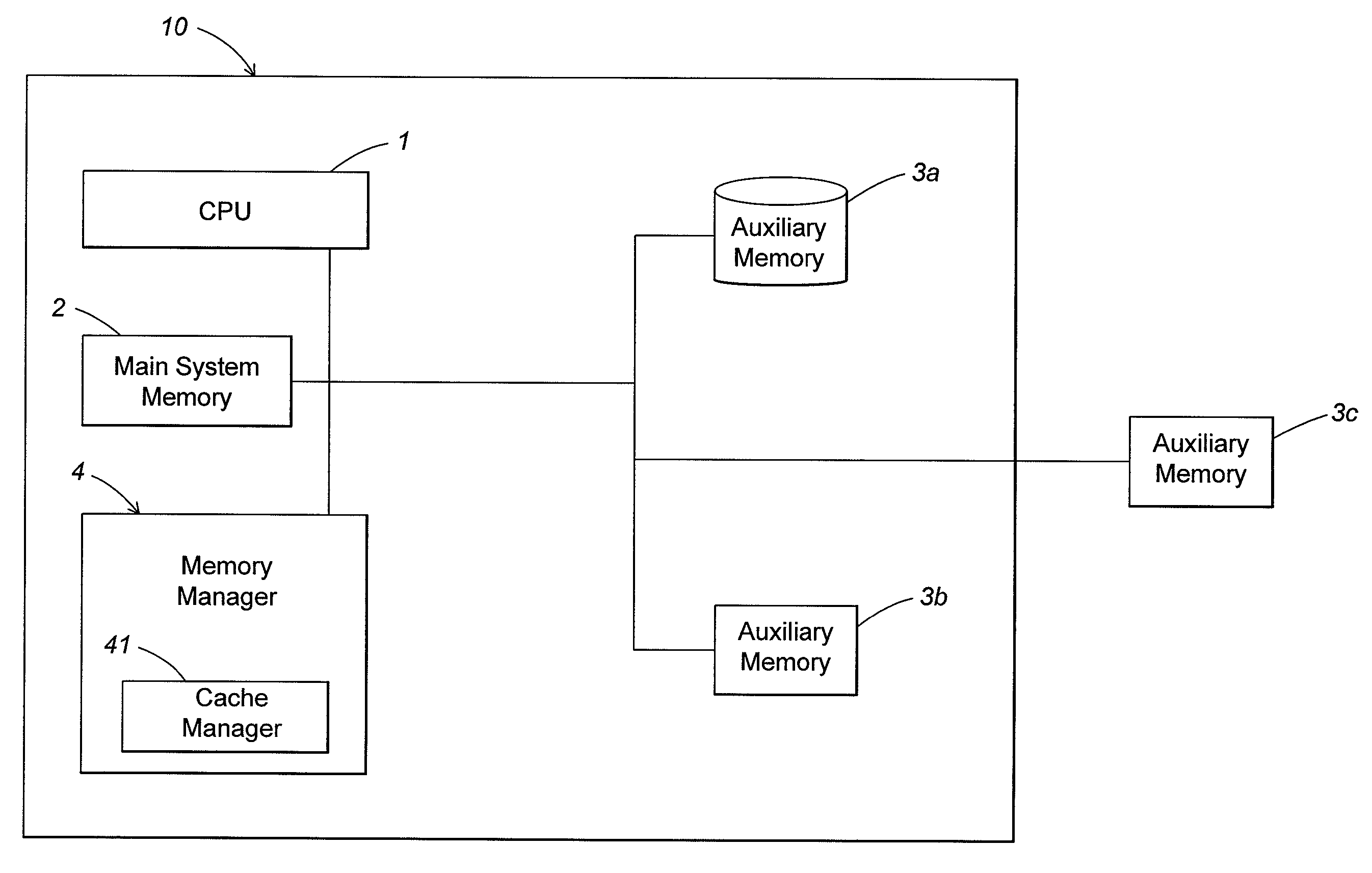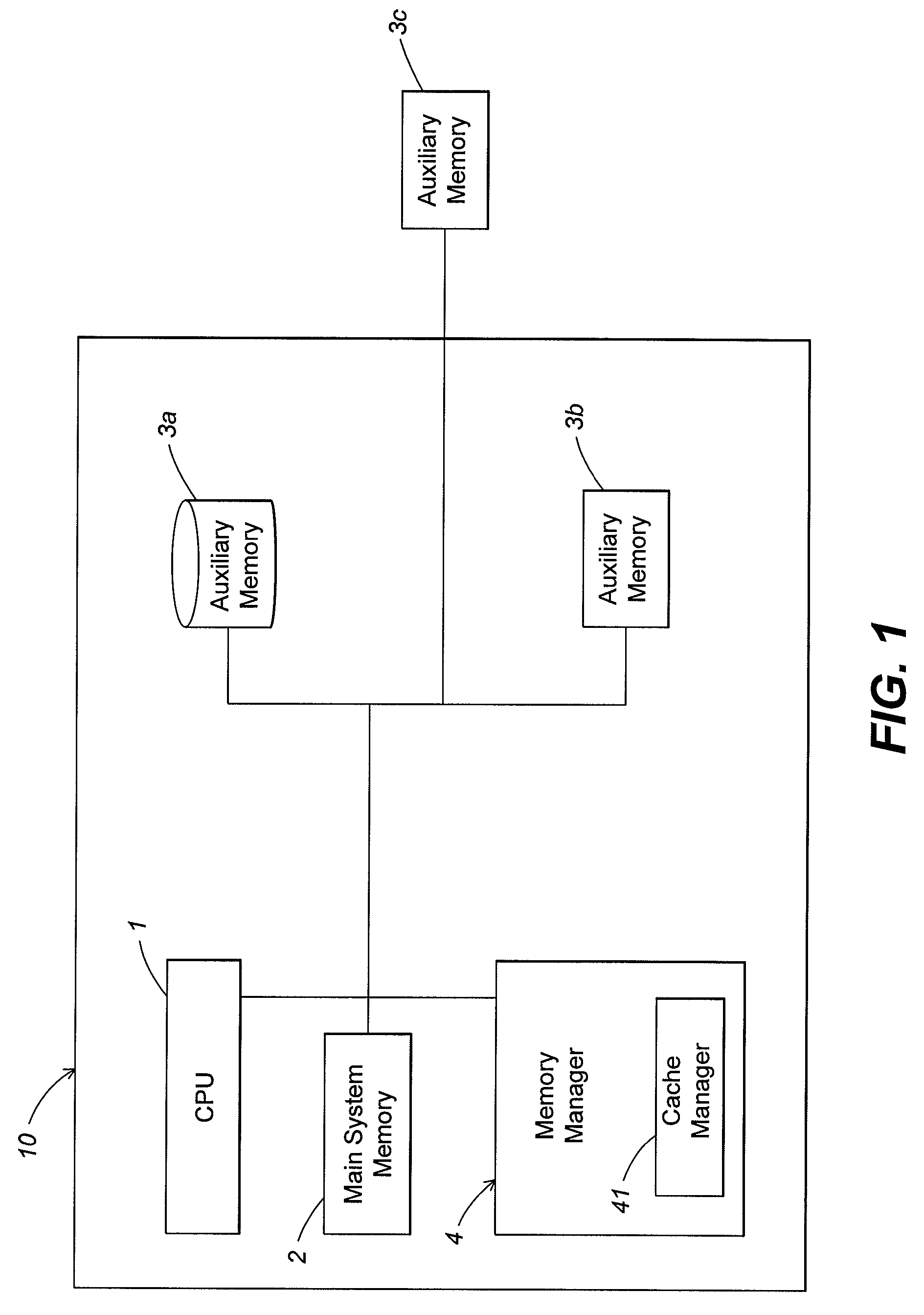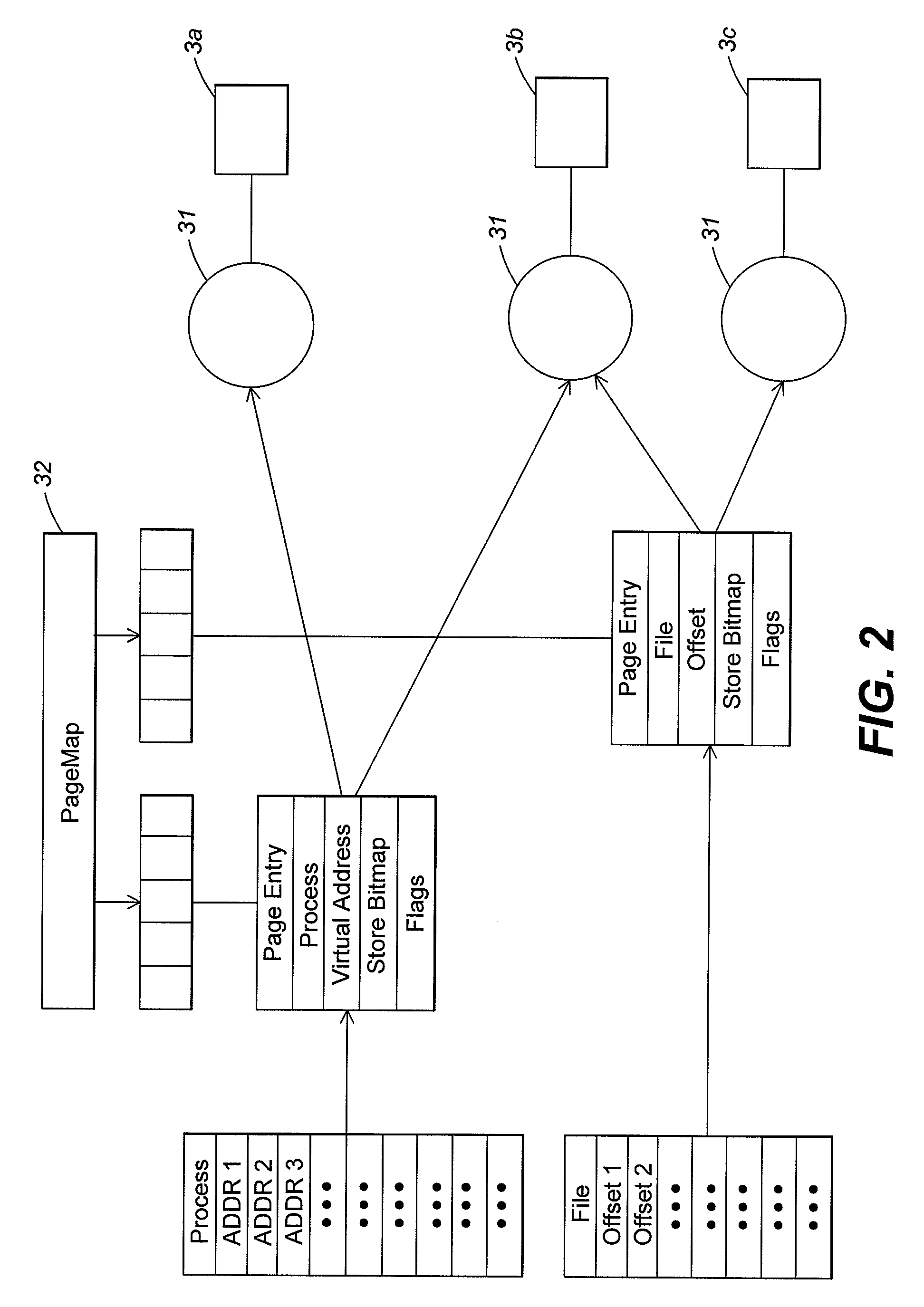Management of external memory functioning as virtual cache
a technology of external memory and virtual cache, applied in the direction of memory addressing/allocation/relocation, instruments, computing, etc., can solve the problem of inefficient use of cache memory space, and achieve the effect of improving the performance of the computer system
- Summary
- Abstract
- Description
- Claims
- Application Information
AI Technical Summary
Benefits of technology
Problems solved by technology
Method used
Image
Examples
Embodiment Construction
[0017]Aspects of the invention are described below with reference to illustrative embodiments. However, it should be appreciated that aspects of the invention are not limited to any of the particular embodiments. For example, embodiments are described below regarding a general purpose programmable computer with one or more auxiliary memories. However, it should be appreciated that aspects of the invention may be employed in any suitable environment, such as where auxiliary memory used as cache memory are linked by a network connection to the computer.
[0018]FIG. 1 shows a schematic block diagram of a computer 10 that is arranged in accordance with aspects of the invention. Although in this illustrative embodiment, only selected portions of the computer 10 are identified as being included in the computer 10, this is done for purposes of clarity and not to limit aspects of the invention in any way. For example, the computer 10 may include a display, a keyboard and / or other user input d...
PUM
 Login to View More
Login to View More Abstract
Description
Claims
Application Information
 Login to View More
Login to View More - R&D
- Intellectual Property
- Life Sciences
- Materials
- Tech Scout
- Unparalleled Data Quality
- Higher Quality Content
- 60% Fewer Hallucinations
Browse by: Latest US Patents, China's latest patents, Technical Efficacy Thesaurus, Application Domain, Technology Topic, Popular Technical Reports.
© 2025 PatSnap. All rights reserved.Legal|Privacy policy|Modern Slavery Act Transparency Statement|Sitemap|About US| Contact US: help@patsnap.com



